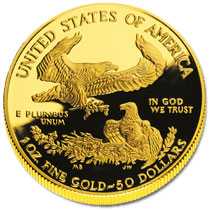
Ed Russell called the MCCC to order at 7:17 p.m. on the sultry evening of August 8, 2000. About 28 MCCC members were present, including 2 Young Numismatists (YNs) --- but no first-time visitors declared themselves. (Please invite friends and relatives, especially young people, to come to the next MCCC meeting!) Attendance at the August meeting was reduced because many MCCC members, including President Willy Massey and Treasurer Simcha Kuritzky, were attending the ANA Convention in Philadelphia.
The August Gold Raffle coin was an Austrian "Wiener Philharmoniker" (0.1 oz of gold, face value 200 schillings) dated 1999. The raffle was won by Chuck Hansmann.
The Bison Chip drawing was delayed until next month, when two names will be picked. You must be present to win!
The program began with a tour of the Philadelphia Mint, where 10-11 billion coins will be produced this year --- equivalent to 12 tractor-trailer truckloads per day. A single day's production of this mint uses enough sheet metal to make 125 full-sized automobiles. The metal comes on two-ton rolls. Punches make thousands of blank planchets per minute, which then are annealed in a furnace, washed, and dried. They are then are inspected, their edges are upset (to make the coin's rim) and they go to be struck by dies in the high-speed coin presses. The video showed the minting process and followed the coins to where they are bagged and sent to the Federal Reserve Banks for distribution.
Philip Diehl, (now former) Director of the Mint, explained the issuance of new US coin designs such as the 50 state commemorative quarters. He noted that they may serve to re-energize the hobby of coin collecting. In past centuries, US coins designs changed every generation, but with few exceptions our coinage has been static for too many years.
In a discussion of the "golden" Sacagawea dollar coin, the broadcast showed staffers at the US Mint's Bureau of Technology as they tested various metals for resistance to corrosion and wear. Alloys were soaked in "artificial sweat", and rubbed by hand, as well as tumbled with cork, sand, leather, etc. The new dollar coins had to correct the mistake made in the design of the Susan B. Anthony dollars, which were too easily confused with the quarter dollar. But the "golden" dollars also had to mimic the SBA's electromagnetic properties in order to work in vending machines. The solution was an alloy of copper, zinc, nickel, and manganese.
The US Congress mandated new designs on the dollar coin. Glenna Goodacre was the winning artist for the obverse; Tom D. Rogers of the Mint crafted the reverse's flying eagle motif. The Discovery Channel broadcast showed Goodacre (in a reenactment) working on her design, with the Native American model (a local student) posed looking over her shoulder with a baby (doll) on her back. The broadcast also showed the 100-year-old reduction lathe process which turns an epoxy/plaster model into a steel master hub. Only one master hub is made for each side of the coin; it is then used to make master dies, which in turn make working hubs, which finally make the working dies that strike the actual coins. Dies must be heat-treated to harden them, and then precision-ground to ensure alignment in the minting machinery. The force with which they strike the coin planchets is immense: 35 tons to strike a cent, 50 tons for a nickel, and 65 tons for a quarter dollar. A die can strike about 300,000 coins before it is worn out.
Mint Director Philip Diehl commented further on the "golden" dollar coin that, "It won't drive the dollar bill out of existence." The broadcast showed Diehl giving autographs and commemorative quarters to young collectors at an American Numismatic Association convention (in Chicago). The same segment went on to discuss slabs (encapsulated coins) and the grading process, error coins, and some rare (and expensive) silver and gold coins. This part of the show finished by exhibiting a St. Gaudens ultra-high-relief double eagle ($20 gold piece) from 1907 (with the date in Roman numerals) which sold for over $1.2 million.
The Discovery Channel cameras then toured the Royal Canadian Mint in Ottawa, where Maple Leaf gold coins are struck. The visit included shots of gold being melted in furnaces and refined until it reaches .995 purity. The Canadian Mint then further purifies its gold via electrolysis to reach a .99999 purity. The gold is cast into 50-pound ingots which are rolled more than a dozen times until they reach the thickness of the coins to be struck. Presses that make 1 ounce Maple Leaf gold coins strike them with 133 tons pressure. Canada produces about 700,000 of these coins annually.
The Discovery Channel show then moved to the Royal Dutch Mint, where work is underway to produce Euro coins to replace current national money. This is a huge challenge, since many high-denomination European coins are used in commerce, much more than in the US or Canada, where paper money is common. The Master of the Dutch Mint was interviewed and discussed the need to replace all his country's coins. This requires the production of 1 billion Euro coins every year. The camera followed coins being shipped to an ultra-high-security storage facility in central Holland. The plan is to transition to the new coinage during an eight-week period in early 2002.
The broadcast then came back to the US and noted that Thomas Jefferson had originally designed the United States' unified currency system, which replaced a hodge-podge of individual state coinages. After some nice images of ancient Greek and Roman coins, the show finished with commentary about the enduring nature of coins --- their historical and artistic significance. Mint Director Philip Diehl observed, "Coins issued now will be in museums 3000 years from now." There are few other modern artifacts that will last that long!
Many thanks to the Discovery Channel for permission to view this excellent show.